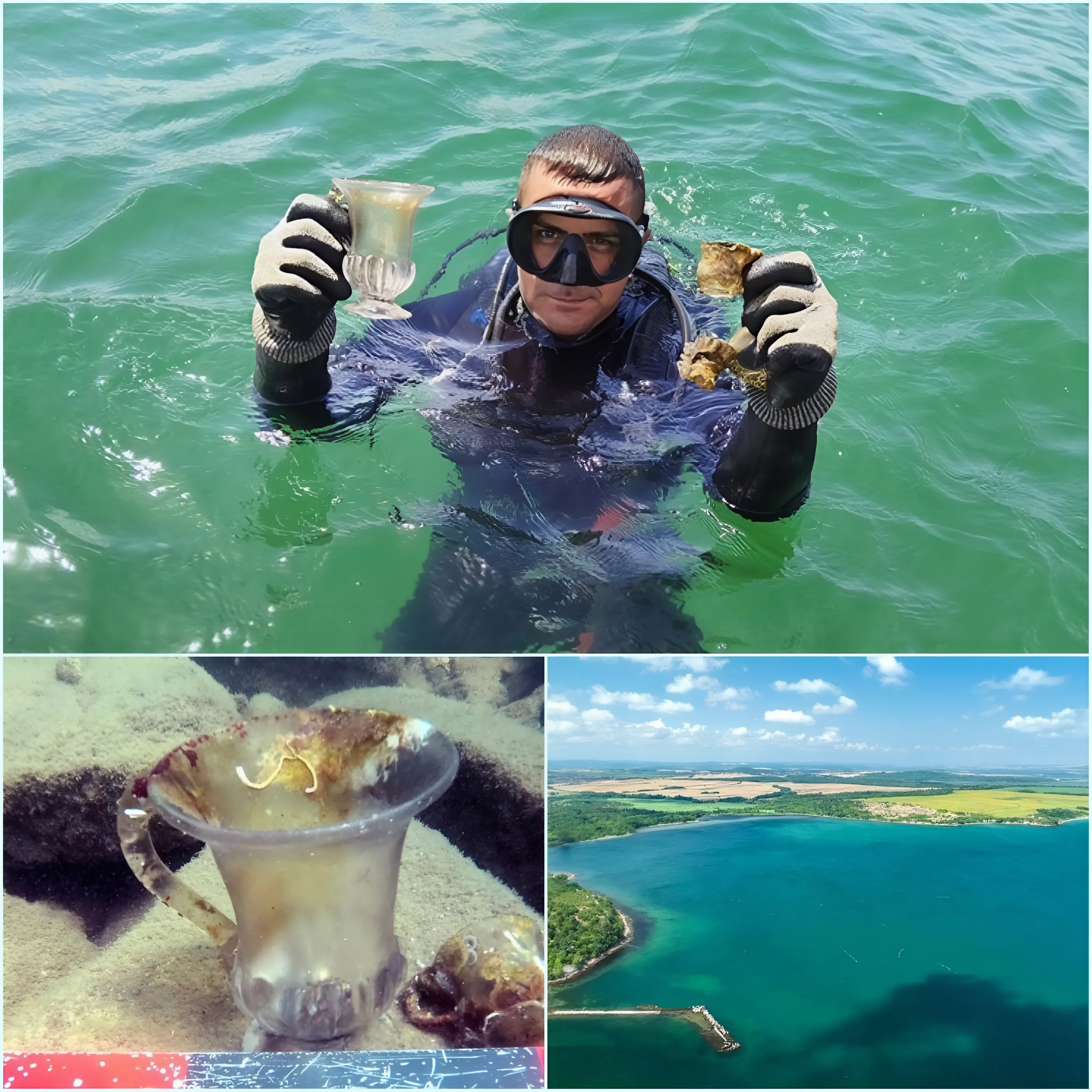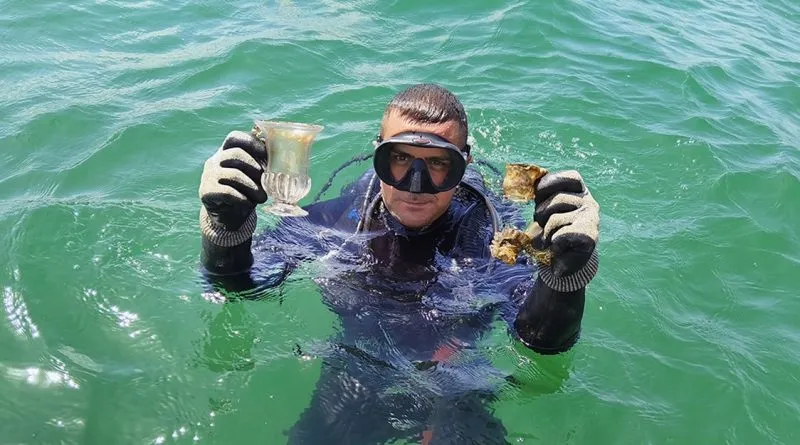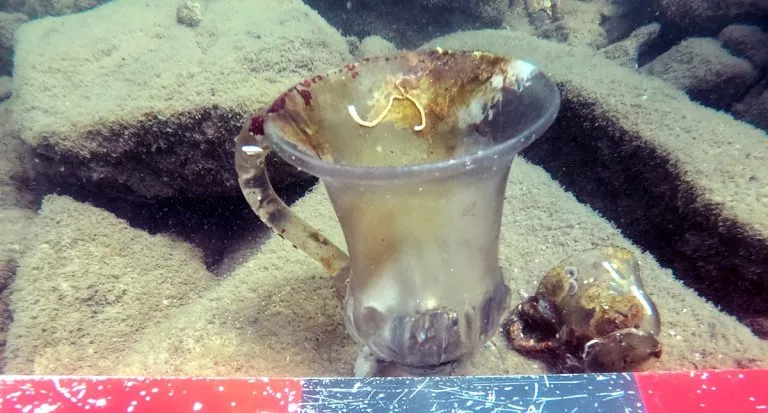In June 2024, a significant discovery of 112 whole and fragmented glass vessels was made during underwater archaeological excavations in Chengene Skele Bay, located in Bulgaria’s Bourgas district. This discovery, led by a team from the National History Museum under the direction of Professor Ivan Hristov, involved dives in five different areas of the bay.

The findings build upon previous discoveries of glass fragments in 2020 and 2021, suggesting that these vessels may have been part of a cargo that was lost from a ship during a storm or rough sea conditions. The Regional Historical Museum Bourgas noted a high probability that the wreckage of the vessel carrying the glass lies near the location of the discoveries, supported by fragments of iron anchor chains and heavily fragmented ceramic vessels found nearby. These ceramics bear characteristic traces of production methods from the Late Middle Ages and Renaissance periods.

The success of the archaeological team in locating the area with the highest concentration of glass artifacts marks a significant step forward in understanding the historical use, trade, and production of glass in the Balkans during the Late Ottoman period. Initial hypotheses suggest that the vessels may have been produced in workshops on the island of Murano, Venice, possibly in the late 16th or early 17th century.

However, the precise dating of the glass objects and the exact circumstances of the shipwreck remain open questions, as further exploration around the bay’s reef and surrounding areas is yet to be conducted. The ongoing research promises to shed more light on ancient maritime trade routes and cultural exchanges in this historically rich region.





